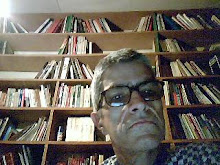The Defense discussed the alleged agreement in Libya between RUF leader Foday Sankoh and Charles Taylor, training in Camp Naama, the initial invasion into Sierra Leone, the withdrawal of Taylor’s support from the RUF in 1992, the AFRC/RUF junta period, the invasion into Freetown, and the conflict after 1999.
No evidence shows that an agreement was made between these parties, the Defense submitted. Moreover, the Defense suggested, there is no evidence to support the Prosecution theory that a joint criminal enterprise existed throughout the entire period discussed at trial. The Defense questioned whether the evidence showed that the alleged common purpose—taking over Sierra Leone to exploit its natural resources—was shared by Taylor, the RUF, and the AFRC for the entire period in question.
The Defense also pointed to fractions between Taylor and Sankoh, and later between the RUF and the AFRC. The Defense asked whether there was proof that in spite of these fractions, they maintained a common purpose and a shared intent.
To be held guilty for a crime vis-à-vis a joint criminal enterprise, the accused’s participation must be significant, or his contribution substantial. The Defense argued that there was no evidence that Taylor had made a substantial contribution.
Conclusion of the Charles Taylor Trial
Griffiths briefly addressed the judges about how the Prosecution had appeared to suggest that the Defense had a burden of production in this trial. On the contrary, the Defense argued, one of the central tenets of criminal law is that the Prosecution is the only party that bears any burden of proof—proof beyond a reasonable doubt—and that the Defense was not obliged to produce any evidence whatsoever. Griffiths did however point to a number of Defense documents that allegedly show that Taylor had contact with Bockarie in 1998.
Griffiths also made a formal apology to the Court for any disrespect the judges may have felt he had shown during the trial. The judges accepted the apology, bringing the matter of potential disciplinary hearings to a close.
The judges, thanking all involved in the trial, formally adjourned to begin deliberations.
A judgment is expected before the end of the year. Any appeals would then follow, with the final conclusion to the Taylor trial expected in early 2012.
(Extraído de um site sobre o julgamento de Charles Taylor, que decorre há três anos e meio)
Assinar:
Postar comentários (Atom)


Nenhum comentário:
Postar um comentário